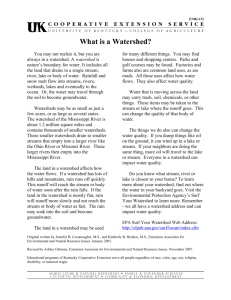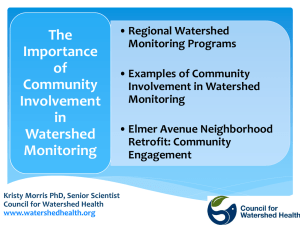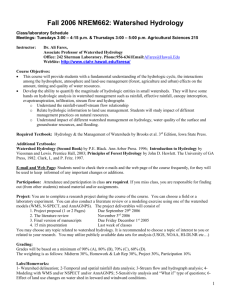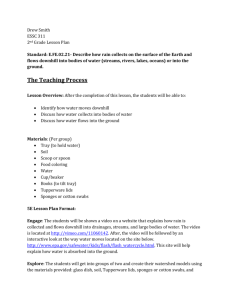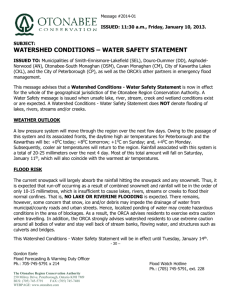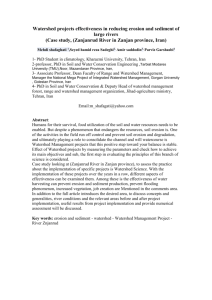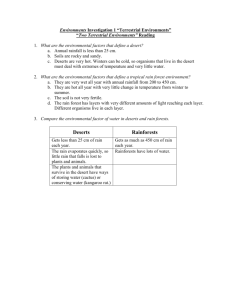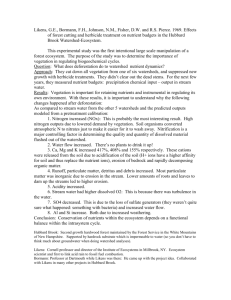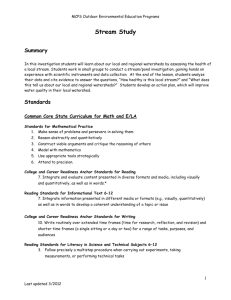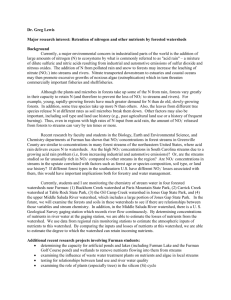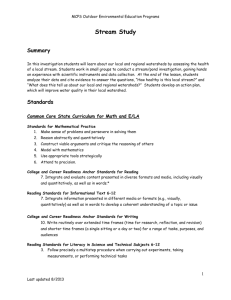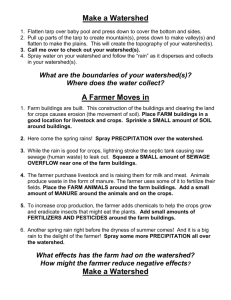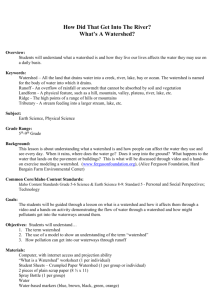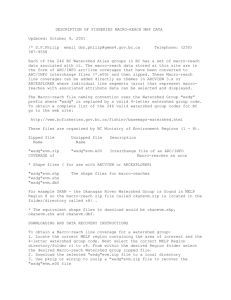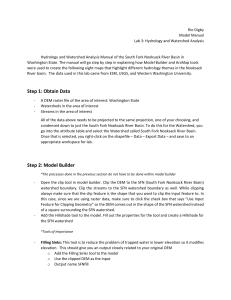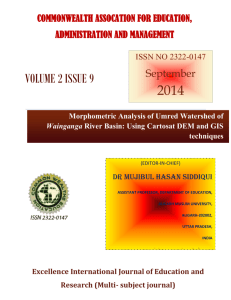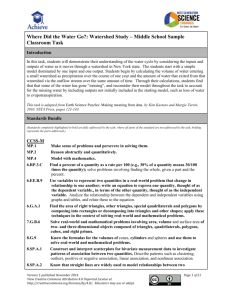week1-handout-and
advertisement
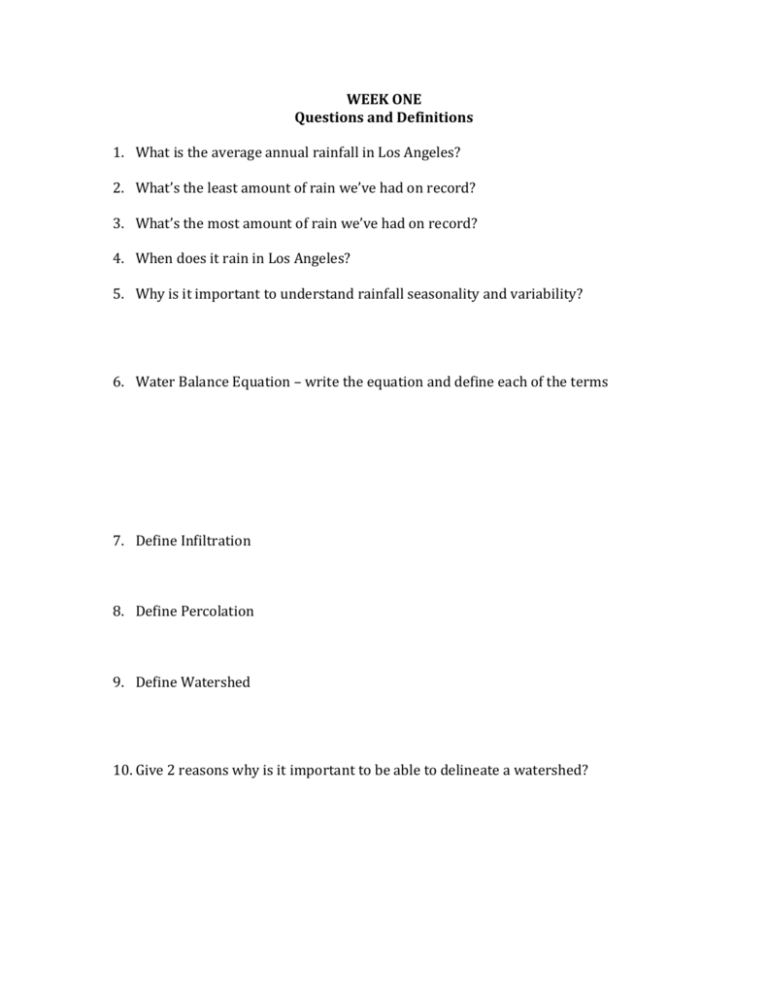
WEEK ONE Questions and Definitions 1. What is the average annual rainfall in Los Angeles? 2. What’s the least amount of rain we’ve had on record? 3. What’s the most amount of rain we’ve had on record? 4. When does it rain in Los Angeles? 5. Why is it important to understand rainfall seasonality and variability? 6. Water Balance Equation – write the equation and define each of the terms 7. Define Infiltration 8. Define Percolation 9. Define Watershed 10. Give 2 reasons why is it important to be able to delineate a watershed? WEEK ONE KEY Questions and Definitions: 1. 2. 3. 4. 5. What is the average annual rainfall in Los Angeles? 15 inches What’s the least amount of rain we’ve had on record? <5 inches What’s the most amount of rain we’ve had on record? ~38 inches When does it rain in Los Angeles? Most rain occurs from November to April Why is it important to understand rainfall seasonality and variability? To plan for water supply and flood control 6. Water Balance Equation – write the equation and define each of the terms o Precipitation = ET + GW + Runoff o Precipitation = rain, snow, sleet, hail, etc. o ET = Evapotranspiration = the process by which water is transferred from land to the atmosphere by evaporation from soil and other surfaces and by transpiration from plants (evaporation of water from plant leaves) o Groundwater = water that is stored in deep underground in soil pores or rock crevices o Runoff = water that flows over the land surface and in creeks, streams, and rivers 7. Define Infiltration – the process by which water enters the soil surface and moves downward 8. Define Percolation - the movement of water through the soil. Once rainwater infiltrates, it can either be evaporated, transpired, or percolated deeper into the soil to recharge groundwater. 9. Watershed – the area draining to a specific point on a stream is called the watershed for the stream to that point. Often, the point is where the stream (or creek or river) reaches the ocean or meets a larger stream, but a watershed can be delineated to any point on a stream. 10. Give 2 reasons why is it important to be able to delineate a watershed? If you want to know where pollution in a stream is be coming from, you need to know the area that drains to it, then you look at the land uses (residential, urban, industrial, agricultural) in that watershed. You have to know the area of the watershed (acres or square miles) to calculate the water balance and estimate streamflow for water supply and flood planning.


